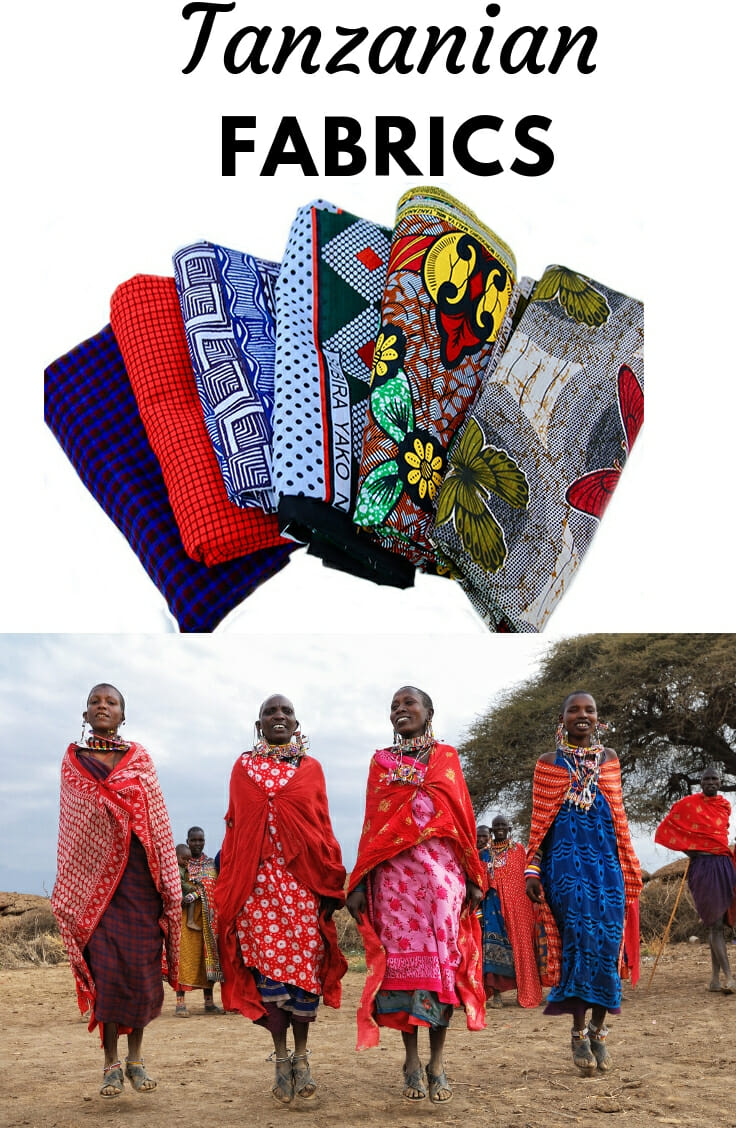
I have to admit it right out front. Hunting for Tanzanian fabrics was not my main reason for coming to Africa. Instead, my husband and I were there with some friends to climb Mount Kilimanjaro, the highest mountain in Africa at almost 20,000 feet or 6,000 meters.
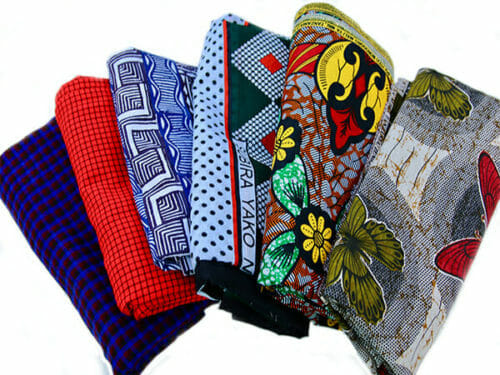

However, being an avid fabric hunter, with the little time I had, I did what I could and secure the most important samples of Tanzanian fabrics that I could find.
I was lucky enough to find the three types I had in mind. The Masai Shúkà, the Khanga with the written messages and the Kitenge. I knew about these fabrics from my previous visit to Africa. I lived in Cameroun, West Africa for two years a long, long time ago.
Coming to Tanzania has been on my bucket list even before “a bucket list” was a thing.
Tanzania lies right under the Equator on the central east part of the African continent and shares borders with 8 countries: Kenya, Uganda, Mozambique, Ruanda, Burundi, Democratic Republic of Congo, Zambia, and Malawi.
It's the backdrop for inspiration for the movie “The Lion King” and the birthplace of the phrase Hakuna Matata! which literally means Don't worry.
And worry you mustn't because this is the place where people smile freely and the scenery grounds you to the earth.
Tanzanian Fabrics
It is wrong to say that a piece of fabric belongs only to a specific country in Africa but rather it is much more accurate to say that it belongs to a region or Tribe.
The geographical demarcation given today to countries did not exist until the 1500s with the colonization of Africa. Before then, people were divided by geographical regions and tribes. Mountains, rivers, valleys, and deserts would make a natural barrier to different tribes. Take as an example the Maasai people or tribe.
The Maasai are found in Kenya and Tanzania and have a very distinctive way of dressing. Most Masai men wear the color red because it is believed it will scare the lions. This would appear to be a valid concern even today given the wild and beautiful nature of the place.
So here are the fabrics I found:
The Shúkà
The Shúkà is a cloth wrapped around the body, normally in red or blue plain, pattern(plaid) or with flowers. It is worn to protect the Masai from the harsh sun rays.
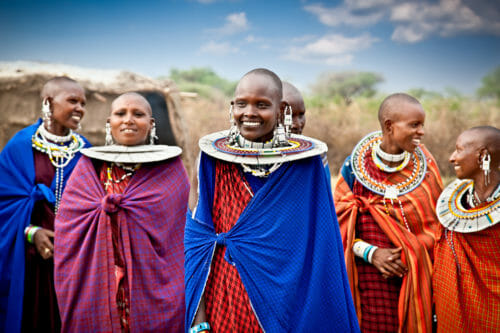
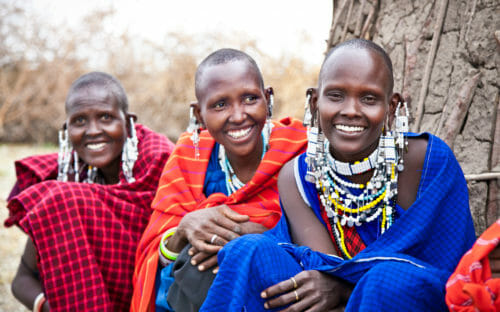
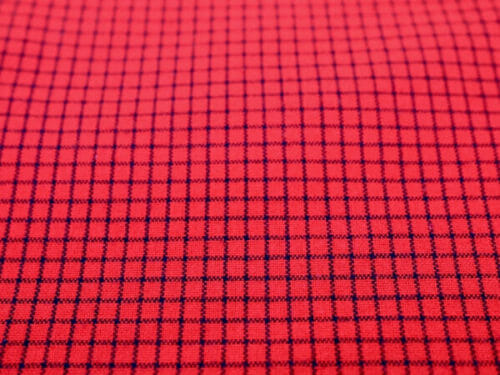
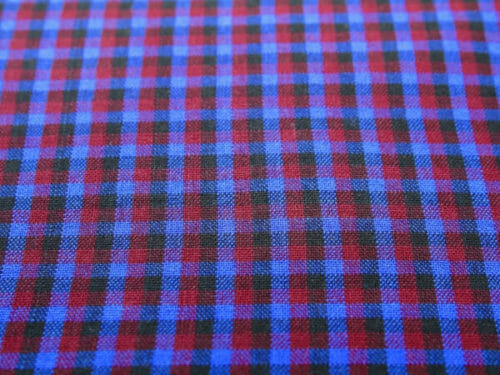
The Khanga
The Khanga is a piece of cloth with written messages of very lightweight cotton about 1.5 meters in length by 1 meter in width. It usually has a border with a central design and a written message. It is worn by both men and women. The messages are normally common sayings passed down from generation to generation. Depending on the occasion, you will purchase the fabric with the message you want to wear or give.
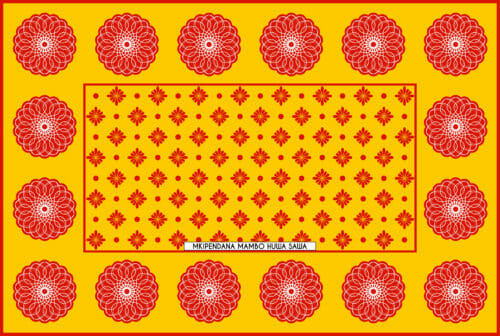

Some Examples Of Traditional Writings
Fadhila za punda ni mateke = The way a donkey expresses gratitude is by giving someone a bunch of kicks. We might know this saying as “No good deed goes unpunished”.
On the picture below: Tuliza Roho Yangu = Ask my spirit
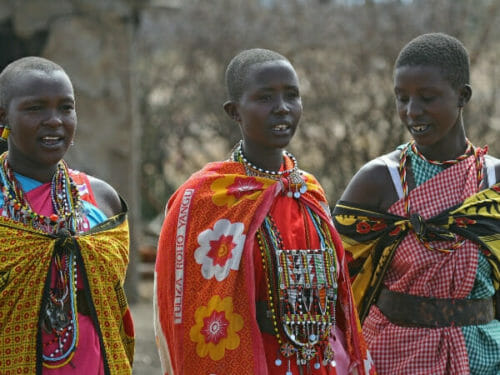

Subira Yako ni ibada kwa mungu= Your submission is worship to God.
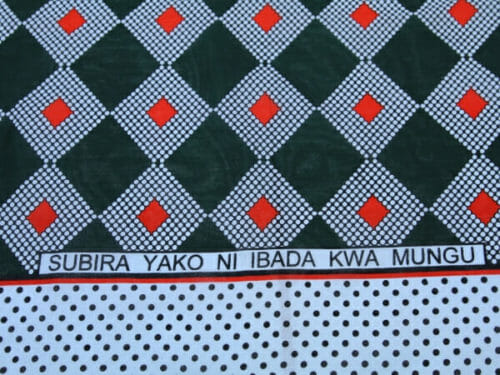

The Kitenge
The Kitenge is not only part of the many Tanzanian fabrics but it is also a significant part of West and East African textile industry. It is the most popular piece of cloth worn by women for many occasions and in many ways such as baby slings, head scarfs, and sarongs.
The Kitenge is printed the same way as the Southeast Asian Batik technique which I have shared with you on my last trip to Solo and Bali, Indonesia.
The use of wax is easily identified in the fabric, giving it a stylized appearance of cracked glass. The print is almost identical on both sides.


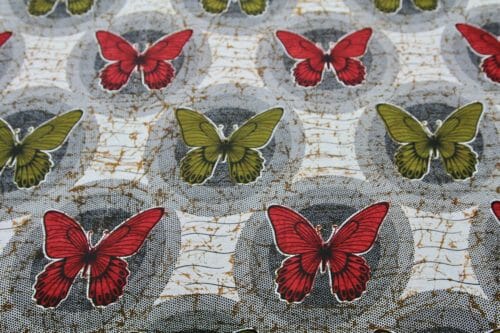

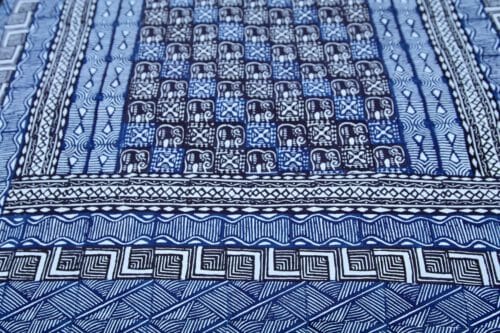

Before I traveled to Africa I did some research into this traditional garment and the customs surrounding it. I found this lovely video made by Tanzanian girls explaining what is and how to wear the Kitenge and Kanga fabrics. I prefer to share this video since they can explain much better than I could on how to use these Tanzanian fabrics.
I have many different plans for my new fabrics and I hope you can stay tuned to see what I can come up with…
It is hard for me to decide which one I love the most since I am a fabric lover and they are all gorgeous and full of culture.
Climbing Mount Kilimanjaro
I had no idea what lack of oxygen and altitude sickness really meant until I experienced it. No amount of reading and video watching could have possibly prepared me for what I would experience until I put my boots on and strapped on my crampons at midnight on my way to the summit.
I can still remember my hands shaking as I am knotting my boots and the slight tinge of panic rising in my chest. I knew I had to control this and I quickly tried to stamp it out like a fire.
Panic will do you in on the mountain, followed closely by fear and lack of proper attire. To my surprise fitness and age take a step back.
Of course, you need to be in reasonably good shape and able to be on your feet all day and climb say a 30 story building while you have a bad cold. Because that's what it is going to feel like for whatever amount of time you choose to go.
Why do it at all? Everyone has many reasons to come to Kilimanjaro, mine is just a childhood dream.
I was nine years old when my father came home with an illustrated encyclopedia, It had hand drawings illustrations of rivers, mountains, and cities. The encyclopedia was mostly about geography and history. Among those pages, I first saw Mount Kilimanjaro, with the snow-white summit and the elephants grazing at the bottom.
Although I did not see any elephants grazing, I did manage to climb the Mountain, all 19,341 ft (5,895 meters) of it. It was not easy, in fact, I think it was the hardest thing I have done so far in my life.
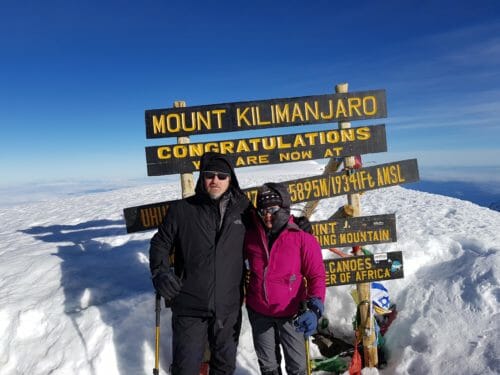

I bet it isn't the first time you heard or read someone climbing a mountain for a dream or inspiration. In fact, this is a practice that goes back to the time of the ancients or perhaps even further. What possesses us to push our bodies to the very edge of our limits?
The worst part for me was that once I reached the summit I lost my vision within a minute of being there, and could not see the landscape nor the ground one meter in front of me (a severe form of altitude sickness). I could not help but wonder what it all meant? Eight days on the mountain to come this high and not being able to see enjoy the summit at all? I can't help but wonder about those famous words by Ralph Waldo Emerson:
“To finish the moment, to find the journey’s end in every step of the road, to live the greatest number of good hours, is wisdom.”
These words are more commonly known as “it is the journey, not the destination”.
It has been a humbling experience, but I think I can say I left my fears at the top of that mountain.
What fear might you ask? My biggest fear is to make YouTube videos, ridiculous I know.
I am happy to report that once off the mountain I recovered my vision, and 24 hours later it was as if it never happened.
It's funny how once you go through a challenge your mind seems to only remember the good parts of the experience and if you ask me today would you do it again? I have to say Maybe… it would depend on the people in the group.
I was lucky enough to climb with an exceptional group of hard-working and successful people, who were really easy to get along with.
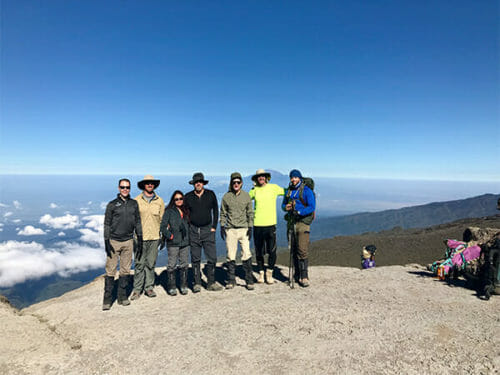

The experience will forever be left in my mind as a reminder to never complain about any challenge in my life.
I hope you found my choices of fabric and my story interesting. What would you make with these fabrics? I'd really like to hear from you in the comments below.
Until next time when I will be telling you about meeting the owner of the Bernina company and his family. Keep your scissors sharp and happy sewing!


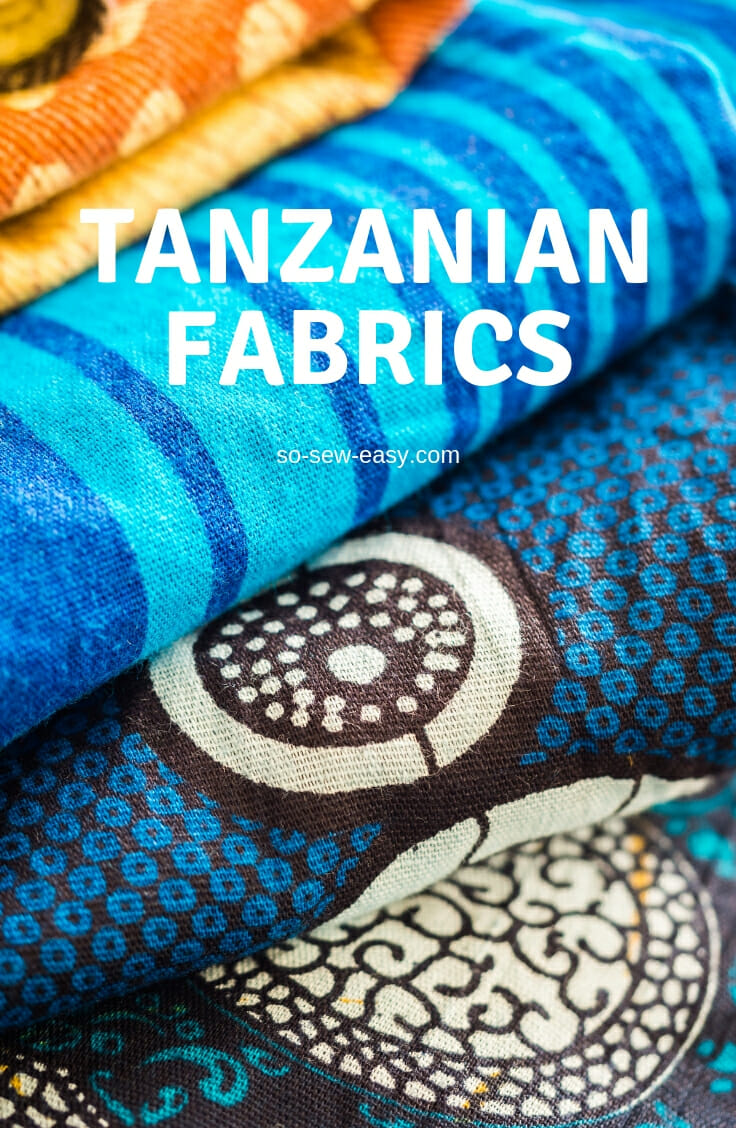








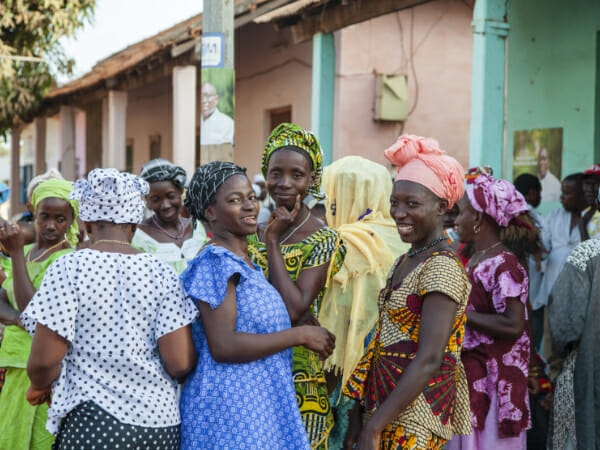




I’m happy for you Mayra! These fabrics are beautiful. I’m sure if I had the same chance I would buy as much as I could pack to take home with me. And then probably keep them stashed and too afraid to cut into lol.
Thank you so much for the lovely video showing how to wear the Kangas! So interesting! I am going to go to the website now ! <3
Great job on the demonstration ladies!
I love this
Tuliza means make calm, not ask (the causative form of tulia, to be calm or quiet). So Tuliza Roho Yangu means Be calm my soul. Uliza, to ask, is a completely different verb.
Similarly Subira is patience, not submission.
I have never heard the mountain referred to as The Kilimanjaro, as in your title, rather than just Kilimanjaro
For these types of fabric designs, the hardest thing is to make something wearable without too much cutting so you don’t lose the design. When I lived on Zanzibar (in the 1980’s) I made a simple sundress with straps from kitenge. A very plain dress design but I managed to retain most of the basic beauty of the fabric’s design. I wore it a lot.
Excellent. I enjoyed your story about climbing Mt. Kilimanjaro but I especially liked that you bought Tanzanian cloth. When I was in Sabah, Malaysia last year I sought out native Kadazan fabric and bought several yards, as well as some batik in KL. I intend to make loose comfy pants and long dresses out of these fabrics.
Hi Carla, I am well acquainted with the batik to talk about, and comfortable pants and long dresses is a great way to utilised it. Make sure you put aside a meter to make a handbag with leather I will soon share with you, I am sure you will like it.
Thank you for your open and honest recounting of this experience. You so skillfully interwove your two experiences (getting the fabric and climbing the mountain) into one story. I felt like I was there with you when you were getting the fabric and also as you were preparing to scale the mountain.
Many years ago I did short-term missions work in SE Asia (including S’pore) and two of the countries I spent time in was Indonesia and Malaysia. I so admired the batik, especially in Indonesia. Not so much Malaysia (although I brought home 3 Malaysian sarongs. I did make a pair of pajama pants out of one of them). I wanted to get some Indonesian batik, but alas, it didn’t happen. A rich businessman in Kupang, Timor, paid for shirts for all of us on the team (there were about 18 of us). I still have and wear my shirt today, over 30 years later! Especially on really hot, humid days. It is an orange print. Not my favorite, but it is cool. Thanks again for your interesting and inspiring story.
Hi Karen, what a place it must have been then, I don’t if you have had the time to go back SE Asia has changed a lot. I have lived in Singapore for 10 years and when I go out of it for 3 months when I come back there are buildings that did not existed and roads have moved literally. Malaysian Batik is more similar to the traditional Batik of Indonesia worn by Royalty, brown earthy colours are the norm. It is Batik from Bali the one we associate with colourful prints of today. Not sure where you are but today is possible to buy batik in many countries, but of course it is never the same as buying it on a trip there. Sending you a bug hug 🙂
I loved reading your story about this interesting fabric and of course your big climb. I’ll be in Tanzania in two weeks time and will be looking out for some Tanzania fabric to bring home
Mayra, what a wonderful and inspirational post! (And fabrics too!) I’m so happy for you that you were able to fulfill a childhood dream, even if it was “the hardest thing”. And maybe because it was so challenging, it’s a greater triumph. Wow!
Thank you Dearest, your words mean the world to me. Love your blog!
What an inspiration you are!! And you’re adding mountain climbing to your repertoire!!! Absolutely love your wonderful sewing ideas and can’t wait to see a pattern or two made with those beautiful African prints…….
Thank you Margie, as soon as I bring myself to cut the fabrics I will share.
I loved seeing and reading about the fabrics in Africa. My husband and I retired and moved to Haiti where I teach sewing to girls (like the ones in the video). They are excited to learn and eager to try new things. Unfortunately, there is no fabric made in Haiti, so I import it from the US. However the artisans here make beautiful things from fabric, metal, wood and other natural things.
Hi Ginny what a brave move, I find your choice of retirement very interesting. Teaching the young in Haiti, now there is a story I would like to hear. If you ever would like to tell it please send me an email I will come and meet you in Haiti and lend you a hand. Just let me know.
This article was mesmerizing, from start to finish. How lucky you are to be able to travel and witness things yourself. The fabrics are lovely, as were the young girls doing the demonstration. It will be interesting to see how you use the fabrics. Surely you will make a kanga. They are beautiful.
Congratulations on making it to Uhuru Peak! I know how it feels as I have also made the summit, and just as you, I mostly remember the good parts! The sense of achievement never leaves you. I also looked out for fabric when I was there, but with no prior research. I did find a nice cotton piece that I figured would make a nice simple skirt. Imagine my disappointment when I saw it a few days later made into a tablecloth! The fabric is still sitting in my stash. One day…
So fun to read and see your travel to Tanzania and talk of climbing the mountain. Since I don’t think i’ll ever make it to Africa I found this very interesting. The photos of the girls dressed in their traditional clothing were spectacular. I love those bright colors against the drab natural colors of the environment. I too like working with a lot of bright colors. That video of,the girls explaining how to wear the cloth was so fun to watch, also.
I know just a little about altitude sickness. When I lived in Wyoming each time I would visit the top of the Snowy Range at just over 12,000 ft I would get a headache. Can’t imagine going as high as you did and having the loss of vision. That sure was a feat to remember.
Thank you for the patterns you give. They are really appreciated.
HI Peggy, one of the guys in the group mentioned training in Wyoming and showed us pictures of the places he normally hikes, spectacular breathtaking scenery I am hoping soon I will see for myself. I appreciate that you appreciate what I share with you, blessings!
I loved your article, the enclosed video and the history. Having worked with fabrics for about 60 of my 70 years I am always ready to learn about other cultures and their fabrics. There is so much to learn in this world and I fear not enough time in my life for it. Keep teaching us. Thank you
Hi Elsie, 60 years working with fabric, I bet you have a thing or to show. Would love to hear your experience, what did you do with fabric for so long? What a great life IMO.
A truly inspiring post!!! I have enjoyed each comment as well! Many sweet blessings:)
Thank you Nancy, blessings back to you!
I thoroughly enjoyed your background stories on the fabrics and story about climbing that great mountain. However, it made me sad that you lost your sight when reaching the top and couldn’t enjoy all its splendor. At least you have photos and the thrill of your accomplishment.
The fabrics will speak to you eventually and tell you what they wish to be.
We will all look forward to seeing you on YouTube. You will be marvelous.
Empathy is such a love human response, I was able to see for about 15 seconds and do have pictures that others took. However I was concern to walk back down to avoid permanent damage that i did not stop to think about what I was missing. Maybe one day I will be back…:)
Amazing article! Really enjoyed every bit of it. Sewing brings me here but I very much appreciate the background to these beautiful fabrics and the beautiful women who wear them! And the adorable girls in the video! Such sweet girls! Great pictures! I love all the colors!
And congratulations on achieving your dream! Absolutely amazing! You go, girl! So proud of you!
Thank you Bia, I must say that is an amazing quilt! Love it!
I am a huge fan of So Sew Easy and look forward to reading the newsletter every week. However, this was, by far, the most interesting and inspiring newsletter ever. First of all, the skirt pattern is definitely a keeper and thank you for sharing. Second, the article about Tanzania is beautiful. The fabrics, colors, and the stories behind these fabrics are delightful, inspiring and quite educational about the country and its beautiful people. The video of the three young ladies was an added bonus!! Your journey up Mount Kilimanjaro was awe inspiring. At this ripe old age of 64 I am still learning from others about meeting challenges. You are awesome and my hero!
Now, for the fabrics, they are so beautiful that I would not want to cut them. I think I would want to wear them as the Tanzanian women do or hang them in a frame. Thank you for a beautiful, educational, and inspirational newsletter!
HI Ivette, I am humbled by your comment and my eyes watered as I read it. 64 years young cause you are still learning that is the spice of life…A big hug to you 🙂
A great article thank you. I bought several African Wax prints when I was in Paris. I did not know about the different types. I still have not seen them up.
Altitude sickness, that I have experienced, although I did not lose my vision. That would be incredibly scary, especially when you have to go back down the mountain.
I got it on a trip I had made several times before, so I was very surprised to have it happen. But I live at sea level and within 12 hours was at 2000m, not too high, but that trip enough to trigger altitude sickness.
Thank you for sharing.
Hi Michelle, Paris yes a great place for fabric hunting! Leaving at see level we had that in common. You never know how your body will react.
I was born and grew up in Kenya. Absolutely beautiful. Would love to buy done Kanga fabrics
Yes I would :). Pakama
HI JIndi, I have never been to Kenya, but I will come up with a reason to go.
So great to hear about all of the smiles there. And great post
I’ll have to read it again and again. Thank you. I also have a box of fabrics made and bought in Africa. They are beautiful indeed!!
Hi Ann, what have you done with the fabrics? Or like me you are so emotionally attached to them?
Loved this post will follow closely to see what you design with these beautiful fabrics
I am still thinking, I have about 10 sketches so far, will share that too.
OMG how beautiful!
On second look – it seems like the ladies in the first pic are hovering a few inches about the ground, especially the young lady on the left. Maybe wearing the special fabrics make one lighter?
Thanks so much for sharing!
LOL! Maybe! they are actually dancing. This girls are very young and almost 6′ feet tall.
Thank you so much for your explanations of the various fabrics! My (only) nephew went to Africa as a college graduation gift from his parents and purchased 2 fabrics for me (he really knows me!?) He couldn’t tell me much about them, but now I know that they are The Khanga and The Kitenge! I knew the fabric was done by batik, but now I’m overjoyed to know a bit more about them. I will also have to look up what my message means too!
You have a wonderful nephew to bring such a gift. Let me know what is your message.
Hi Mayra! I finally got a chance to check the meaning for my Khanga (Tuombeane Yenye Kheri) “We wish each other well”. I honestly thought the “words” were just a company name or something! I wanted to share photos of my Khanga and my Kiting. (Yes, I know Dean’s the best nephew!) Again, thanks again for all the information you always provide!!
It is my pleasure and Thanks for sharing Joyce, Love the fabric! Cheers!
Well done on your mountain climb. My daughter did this about 15 years ago ( and also made it to the top) She brought me back a rug that she admired there and the lady who had just finished making it swopped my daughter for her jacket ! Luckily this was when she was back down the mountain.
Love the fabrics too and can`t wait to see what you show us.
Smart girl, it was a win win situation if you think about it. A rug takes many hours to make and her jacket hard to come by. I found to my surprise the cold, bitterly cold so lady got a good deal.
What an interesting glimpse of a country. There are many news stories of violence but seldom if any of the the happy side. The three young ladies were charming. And YOU, what an adventure. I am so nestled in my quiet life. It was thrilling to join you in word pictures. Thanks for sharing.
Yes it is sad how the only reports we see and hear are of the bad, the ugly and the violent. But Africa is much more than that, is an amazing place where I have found nothing but kindness.
I really enjoyed reading this. The women are beautiful. I love their smiles. The fabric is beautiful. Did they make it? If so that would make another great story and video. I am glad your vision came back. You have pictures to see at the top. The camera was your eyes.
I am very happy you took the time to read the article, no they did not make it, there are a few textile companies in TANZANIA who mass produce the fabrics. The Shukas I got were woven in a village not far from where I was staying the others I got in the local market.
I loved reading about your experience and thoughts and seeing the beautiful fabric. The video the girls did is delightful, as well as educational. I can hardly wait for your next brave fete — doing a vlog!
HE, he, he I don’t know about a vblog, but will settle for instructional videos. Baby steps…I am so horribly shy in front of a camera.
It’s very nice to read about your trips and adventures thanks for sharing, but also to let us know of the fabrics, that you find and its background and meaning, beautiful all of them, it’s hard for me to say what would I do with them,because they are so pretty I like to admire them just the way they are! (I could frame them ?) THANK YOU again and I wish you the best and keeping on traveling! ???⛰❤❤
Hi Silvia, yes I think I will frame one of them, the rest I have a few sketches already done, will share once I cut the fabric.
Thank you so much for sharing such a beautiful story. It was a delight to read about the different fabrics and how they are worn. And a mountain climb as well…truly inspiring! I am new to your blog, and it is absolutely delightful.
Welcome Irene, hope you stay a while:)
I so loved reading your adventure! Thank you for sharing ALL of it!!! The fabrics AND the women are beautiful. I don’t know that I could cut that fabric up, it is so stunning! I was wondering, what is the actual fabric made of? Cotton? Silk? Where is their fabric created? It brought to mind so many more questions !!!
HI Kathy, the woman are beautiful, very tall (among the tallest in the world) and graceful and their smile is contagious. The fabrics are made of 100% cotton, the Shuka is traditionally made of cotton but today you can find a blend of cotton and wool and cotton and polyester.
Lovely story! I would love to buy so fabric to make me a skirt.
I will share a dress pattern and will put some links fo places where you can buy the fabrics, where in the world are you?
My husband and I just returned from Tanzania and Kenya. I had the pleasure of purchasing some lovely fabric in Arusha. I sew garments and bags and plan on using the fabric for that purpose. Love Africa, everyone should visit. For us it was like going home although we were not born in Africa our ancestors came from there.
Hi Dolores, I would love to see what you purchased, if you would like to write a post get in touch with me. mayra@so-sew-easy.com
What a fabulous introduction to a fascinating country and jaw dropping fabrics. Thank you so much for your giving of love and time to Bethany House and for sharing your journey with us. Heart warming post!
Thank you for taking the time to read, I fell in love with Tanzania and the people. Wish I could get more involved.
Thank you for sharing your inspiring journey. Fabric is such an integral part of a country’s culture, from the way it is made to how it is used. I would make a quilt. I recently read a novel by Catherine Mann set in Africa titled “Free Fall” and a kanga played an important role in the story. Now I have a better understanding of the kanga and how versatile a piece of fabric can be.
I have never made a quilt so this is the perfect time to start. Thank you for sharing the name of the book. Definitely will read it. Sending you a big hug!
Love this post!
Thank you for your love Donna, means the world to me you taking the time to read.
Lovely fabrics!Proud to know that you enjoyed my Tanzania☺.I would make a skirt preferably a circle skirt, an off shoulder maxi dress and the blue one with little squares you could make some beach shorts or pants.
Thank you for sharing your story.
Hi Clara, i loved your country and hope I can get back there sometime in the near future, I will keep in mind your suggestions. Kind Regards 🙂
Fabulous story! What a
memory you now have.
Glad the altitude sickness
went away.
Carla from Utah
Thank you Carla, It did, I was very lucky to have a great wonderful guide.
What a wonderful, wonderful story. So glad you made it up and down the mountain in one piece. Thanks for sharing these beautiful fabrics from Africa. I think you should use them to make a skirt.
Yes I think I will. Thank you for the suggestion:)